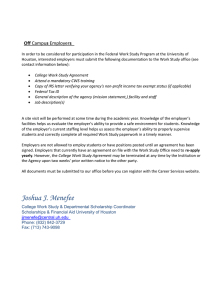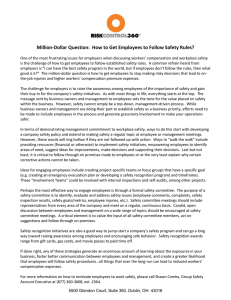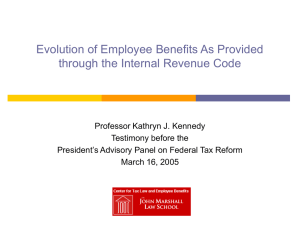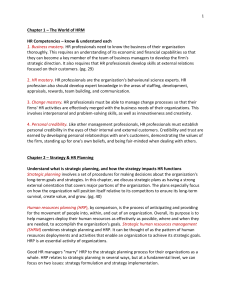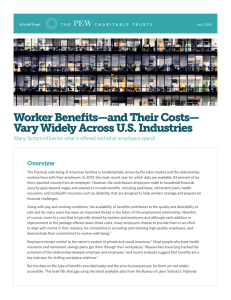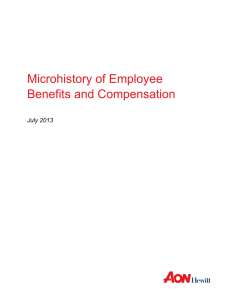Document 15112609
advertisement
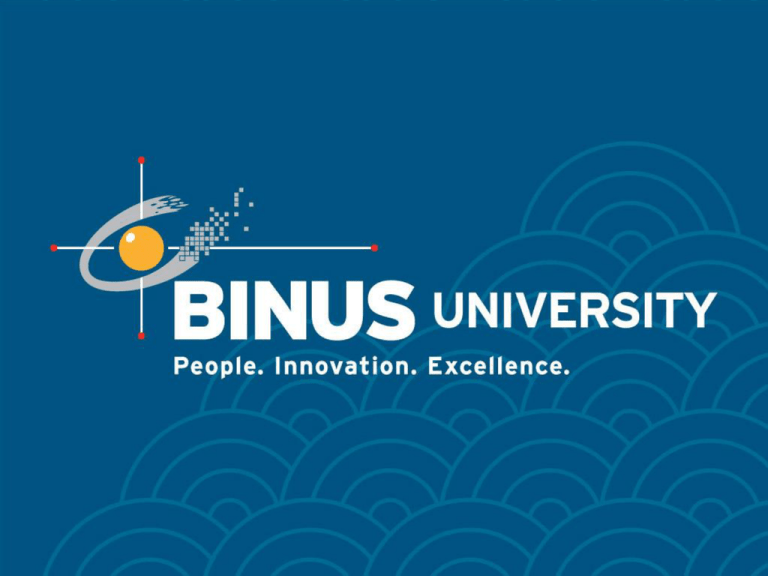
Matakuliah Tahun : J0124 – Manajemen Sumber Daya Manusia : 2010 Employee Benefits & Non Financial Compensation 20 Learning Outcomes After studying this chapter, the students should be able to : • Define employee benefit • Describe the characteristics of a sound benefits program Bina Nusantara University 3 Requirements for a Sound Benefits Program Strategic Benefits Planning Communicating Employee Benefits Information Providing for Flexibility Allowing for Employee Involvement Benefits for a Diverse Workforce The Chief Objectives of Benefits Programs • Improve employee work satisfaction • Meet employee health and security requirements • Attract and motivate employees • Reduce turnover • Maintain a favorable competitive position Providing for Flexibility • Flexible Benefits Plans (Cafeteria Plans) Benefit plans that enable individual employees to choose the benefits that are best suited to their particular needs. A basic or core benefits package of life and health insurance, sick leave, and vacation ensures that employees have a minimum level of coverage. Employees use “credits” to “buy” whatever other benefits they need. Flexible Benefits Plans: Advantages and Disadvantages ADVANTAGES • Employees select benefits to match their individual needs. • Benefit selections adapt to a constantly changing (diversified) workforce. • Employees gain greater understanding of the benefits offered to them and the costs incurred. • Employers maximize the psychological value of their benefits program by paying only for highly desired benefits. • Employers limit benefit costs by allowing employees to “buy” benefits only up to a maximum (defined) amount. • Employers gain a competitive advantage in the recruiting and retention of employees. DISADVANTAGES • Poor employee benefits selection results in unwanted financial costs. • There are certain added costs to establishing and maintaining the flexible plan. • Employees may choose benefits of high use to them that increase employer premium costs. Benefits Issues Concerns of Management Union demands for additional benefits Benefits offered by other employees Tax consequences of benefits Rising costs of providing benefits Types of Employee Benefits Required By Law Discretionary Social Security Health care Unemployment Insurance Payment for time not worked Workers’ Compensation Supplemental Unemployment Benefits Unpaid leave (FMLA) Life and LT care insurance Retirements and pensions Workers’ Compensation Insurance Injury is a cost of doing business Covers Employers Covers Employees Assumed employment risk Cost of injury Negligent co-workers Temporary, Permanent, Partial or Total Disability Contributory negligence Survivor’s Insurance Payment for Time Not Worked Vacations with pay Severance pay Time Not Worked Sick leave Paid holidays Other Discretionary Benefits • Supplemental Unemployment Benefits (SUBs) A plan that enables an employee who is laid off to draw, in addition to unemployment compensation, weekly benefits from the employer that are paid from a fund created for this purpose. SUB benefits are considered deferred compensation and not current earnings. The fund is derived from employer contributions based on the total hours of work performed by employees. Retirement Programs • Silver Handshake An early-retirement incentive in the form of increased pension benefits for several years or a cash bonus. • Preretirement Programs Counseling Seminars Workshops Retirement tryouts Types of Pension Plans • Contributory plan Contributions to a plan are made jointly by employees and employers. • Noncontributory plan Contributions to a plan are made solely by the employer. • Defined-benefit plan The amount an employee is to receive upon retirement is specifically set forth. • Defined-contribution plan The basis (amount) an employer contributes to the pension fund is specified. Employee Services • Employee Assistance Programs (EAPs) Services provided by employers to help workers cope with a wide variety of problems that interfere with the way they perform their jobs. Typically provide diagnosis, counseling, and referral for advice or treatment for problems related to alcohol or drug abuse, emotional difficulties, and financial or family difficulties. • Child and Elder Care Care provided to a child or an elderly relative by an employee who remains actively at work. Other Benefits and Services Awards Recreational and Social Food Services On-Site Health Services Credit Unions Legal Services Purchasing Assistance Transportation Pooling Financial Planning Housing and Moving Non Financial Compensation •The job •Job environment •Workplace flexibility Bina Nusantara University 17

